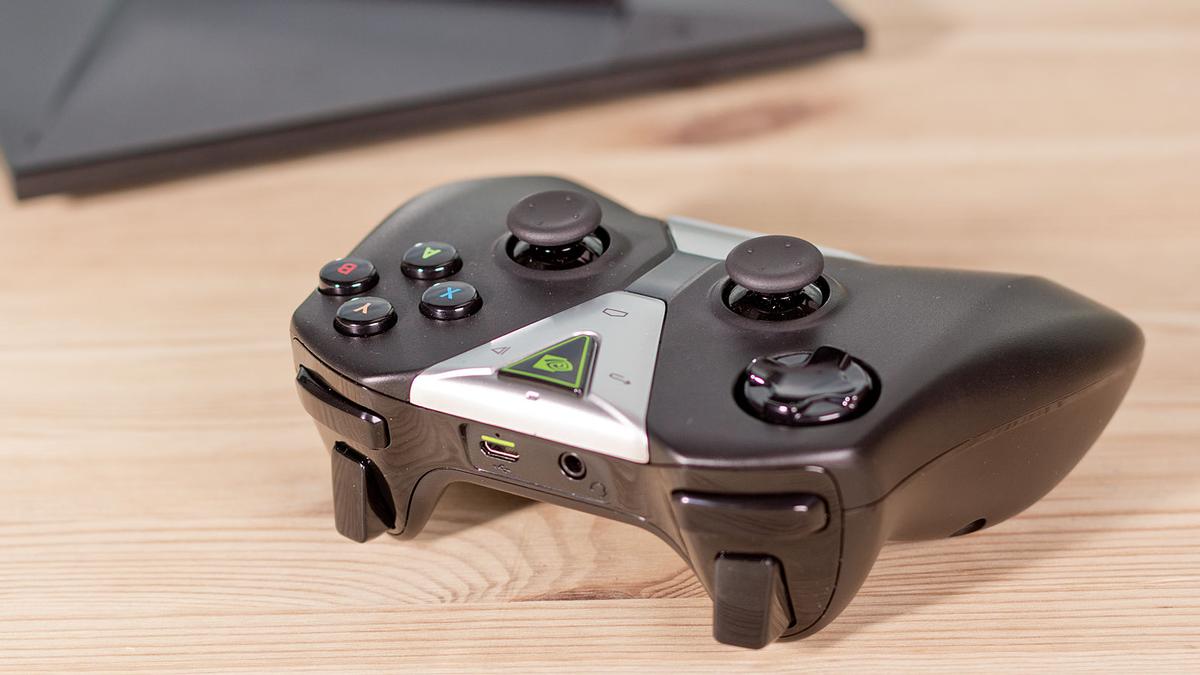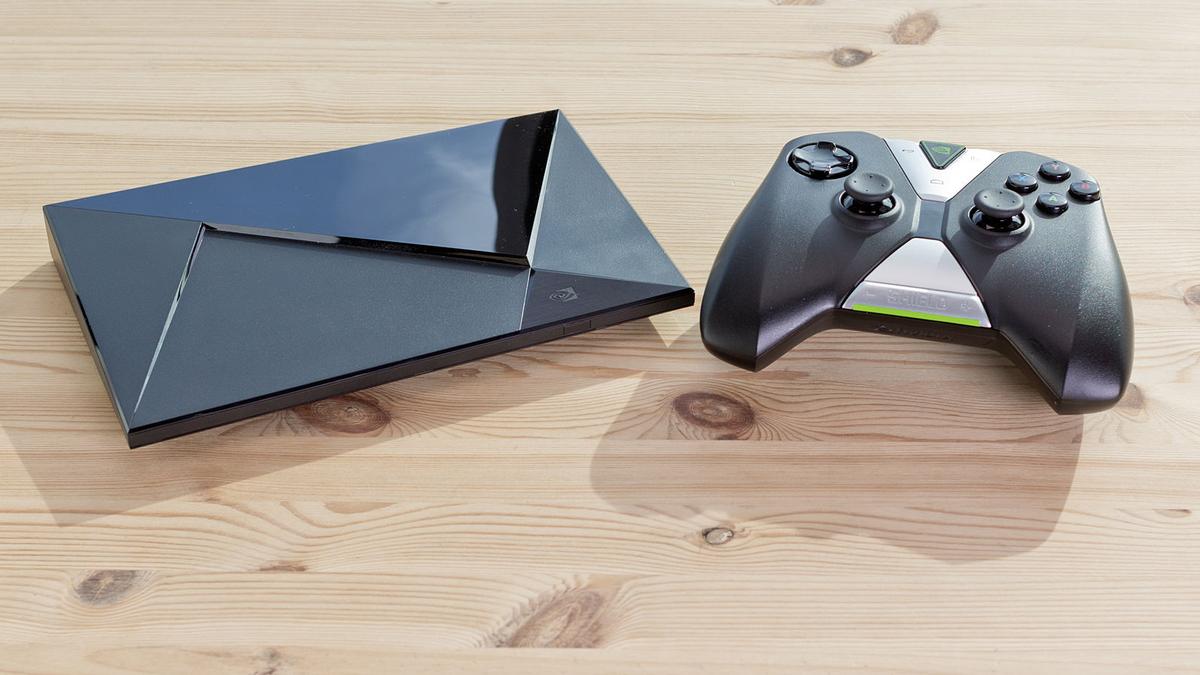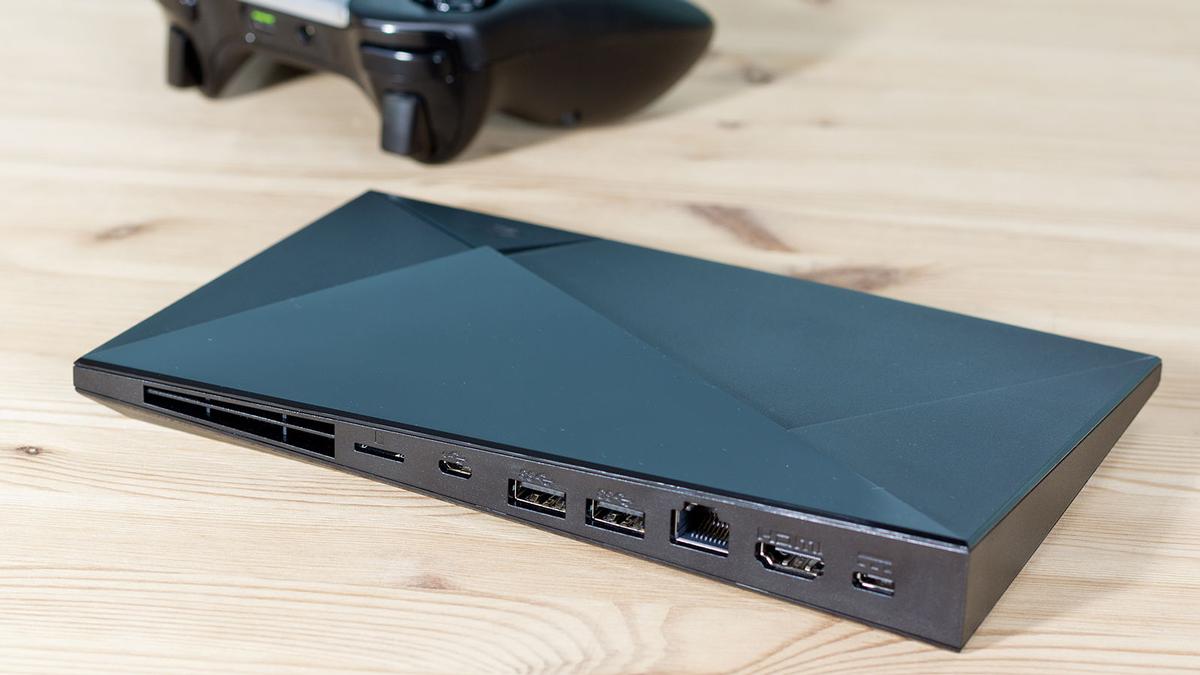Updated on 9/1/2017 with a section comparing the first- and second-generation Nvidia Shield TVs. Read our hands-on review of the new Nvidia Shield TV for 2017.
Nvidia Shield TV review: Nvidia Shield TV vs Nvidia Shield TV 2
Nvidia took to CES 2017 in January 2017 to announce the second-generation Nvidia Shield TV, complete with Google Assistant and an all-new design. However, despite the impressive nature of the Nvidia Shield TV 2, first-gen owners shouldn’t feel too jealous as the company has announced that many of the features will also come to the original Shield TV. Let’s talk internals: the spec of the first and second generation Nvidia Shield TVs are essentially the same – in fact, the first-gen Shield TV has a MicroSD card slot to expand storage, something the second-gen device lacks. Yes, the second-gen Shield TV features a slimmed down design that allows it to be hidden away, but we would argue that it’s not worth upgrading just for a slimmer model. That’s not all either; the second-gen Shield TV features Android 7.0 Nougat, another feature that Nvidia has committed to bringing to first-gen Shield TVs on the same date that the new TV goes on sale. It’ll also gain Google Assistant support in the following software update, although the release date for that update is a little more sketchy. The redesigned Shield controller boasts a more erganomic design with more features than its predecessor, and the new Remote boasts better battery life and an IR blaster. While existing Shield TV owners won’t be getting them for free, Nvidia has confirmed that the new-gen controllers will be compatible with first-gen Shield TV devices. It’s a similar story with the Nvidia Spot remote, with support as soon as the Android 7 update drops. So, in summary, while the second-generation Nvidia Shield may look impressive, first-gen Shield TV owners have no real need to upgrade – just buy the new controllers when they come out!
Nvidia Shield TV review: Design and build
Before we go any further with the review and talk about all that sweet 4K, Android TV powered goodness, lets first appreciate the design and build of the Nvidia Shield. Visually, it’s arguable one of the best looking media streamers that you can buy at the moment, especially when compared to the rather bulky Apple TV and Roku 3. It’s not hard to notice the hat-tilt to the gaming community with its design, which resembles a mini gaming PC rather than a standard media streamer, a device that many manufacturers design to disappear into its environment. That’s not the case with the Shield, it’s in your face with its familiar green LED and protruding angles – it wants to be noticed and talked about. Much like the PlayStation 4, the Nvidia Shield can be laid on its side or be stood upright, though it won’t stand upright without the stand, which isn’t included and will set you back an additional £24.99. Though it may seem pricey for a stand, it slots in perfectly with the angular design of the Shield, and looks like an extension of the device itself instead of an accessory (and seeing it slot in perfectly is strangely satisfying). Dimensions wise, the Nvidia Shield measures in at 210x130x25mm and weighs only 654g, which makes it a relatively thin, portable device. In fact, we’d go as far as to say it’s the perfect companion for travellers – the Shield is small and sleek enough to fit in a rucksack or suitcase, and will provide you with entertainment in the form of on-demand TV and gaming anywhere that you go that has Wi-Fi and a TV. It definitely beats the hotel-provided entertainment we’ve experienced in the past anyway! Originally, Nvidia decided to bundle the Shield with a gaming controller – which should give you an idea of its biggest selling point (this has changed since the review was published, and the company now offers both a controller and remote). The controller itself is pretty bulky and does take some getting used to, especially for those of us unfamiliar with the layout of an Xbox-esque controller. Two player games are available to play on the Nvidia Shield, so if you want to game with family/friends you’ll have to fork out £49.99 for an additional controller. One plus point for the controller is that its connected via Wi-Fi Direct, which provides incredibly low latency response times both when navigating the Shield UI and playing games. It’s also compatible with the Nvidia Shield tablet, giving you the freedom to game on-the-go with a controller rather than having to use a touch screen. If you’re the type of person that would prefer a small, slim remote with built-in voice control then you’ll be happy to know that Nvidia will supply you with one along with the controller, with additional remotes costing £39.99. We were supplied with a remote along with our review unit, but we preferred using the controller to navigate the Shield UI, though this may be because we spent most of our time gaming on the device and it’s likely to be a different story for those using it primarily as a source of on-demand video content. Update 24/11/2015: Nvidia has announced that the Nvidia Shield will now come bundled with both a controller and a remote, instead of just a controller.
Nvidia Shield TV review: Software
Now we’ve talked about the design of the Nvidia Shield, it’s time to move onto the software. The Shield is essentially an Android TV powered by Android 5.1 Lollipop, which also includes Google Cast for casting of content from Android and iOS devices (though iOS support is limited). Generally, the UI is a beauty to use – and is one of the slickest, most responsive we’ve used to date. It’s nice and simple, with everything you need at the touch of a button. There’s access to Google’s Play Store, with a selection of apps and games designed to be enjoyed on a TV. In fact, we noticed that the likes of Netflix and BBC iPlayer load up much faster than on other devices we’ve used, partly thanks to the power under the hood – but we’ll come to that in more detail later. The Shield also has a plethora of exclusive apps and features including the Shield Games portal, which lists all the recommended Android games for purchase or free download from Google Play, all of which have been specifically optimised for use with the Nvidia Shield. Those assuming that these are the bog-standard Android TV games, you’d be wrong – the Shield includes games like Half-Life 2, which aren’t available anywhere else, with other PC hits including Borderlands 2 and Resident Evil 5 making an appearance in the near future. It’s ideal for casual gamers that don’t want to fork out £40-50 for the latest blockbuster game, and just wants something they can enjoy occasionally in the evenings and weekends. Being an Android TV, the Nvidia Shield also features voice control via Google Now. Simply hold the Nvidia logo on the controller or the mic icon on the remote to activate the voice recognition software, allowing you to easily open apps or search for content on the device. Though we’re used to voice control, we were surprised at how quickly it understood what we were saying and acted on it. Google Now being what it is, it also provides you with personalised recommendations on your home screen based on your activity and interests. After playing games on it for a few days, the Shield would suggest our favourite games we’d played, as well as some we hadn’t heard of, and a list of movies and YouTube videos we might be interested in. It’s a great way to explore new content you might’ve ordinarily missed and although the suggestions were initially not very interesting, it got more accurate as we used it. The Shield also features a service called Nvidia GameStream, a service that enables gamers to stream their PC games to their TVs in full 1080p HD at 60 frames per second over a local network. There is a catch though; gamers must have a compatible Nvidia graphics card installed on their PC, and be logged into the GeForce Experience available for Windows. Once you’ve logged in, you should see your entire compatible game library appear on the Nvidia Shield, ready for big-screen gaming. During our testing we experienced no lag and impressive response times, and we could go as far to describe the experience as being ‘console-esque’.
Nvidia Shield TV review: Native 4K support
One noticeable element of the Shield that looks impressive in 4K is the UI itself. The text, the icons and the graphics used by the Shield look crisp, with the experience reminding us of the first time we saw a retina display after using the iPhone 3Gs for two years – you’re not quite sure how you dealt with inferior quality for so long. Looping back to our previous point, we think that the UI is one of the best we’ve used with regards to media streamers, and running at 4K it looks even better. So, Netflix is a bit disappointing in 4K – is it a gimmick? We’d argue not, as local 4K playback is a different story altogether. Using either the USB 3.0 port or MicroSD slot built into the Shield, you’re able to load up and play your own native 4K videos, which is where you’ll really experience the impressive quality of 4K. The only issue is that at present good quality 4K footage is hard to come across, mainly due to 4K video files being a lot larger than their 1080p HD companions. Hopefully the offering will improve as home internet speeds increase and more people buy 4K TVs. See also: Now TV review
Nvidia Shield TV review: Hardware
As we mentioned earlier, the Shield feels super responsive and provides short loading times, and that’s down to what it’s packing inside. It features Nvidia’s own Tegra X1 processor with a 256-core GPU, coupled with 3GB of RAM. This equates to a media streamer more powerful than any other in the market, with the company boasting that the Shield is 3x faster than the 2015 Apple TV, 8x faster than the Fire TV and a whopping 25x faster than the Roku 3. Though we can’t verify the exact claims, we do agree that the Shield is a well-oiled nippy machine, with apps loading up almost immediately after we’ve opened them – even Netflix and BBC iPlayer videos were loading up almost instantly (though we expect this is helped by ~100MB internet download speeds). It’s worth noting that the Tegra X1 is the highest spec mobile processor on the market at the moment, so powerful in fact that Google has decided to feature it in its upcoming Pixel C tablet, and based on our use, we don’t blame them. Android games are handled with ease, and even the more graphically hungry games rarely encounter issues. If you’re looking for a gaming-focused, powerful media streamer, we’d definitely recommend the Nvidia Shield. So apart from a powerful processor, what else does the Nvidia Shield feature? It has 802.11ac Wi-Fi, Bluetooth 4.1 and an IR receiver for compatibility with universal remotes, as well as Logitech Harmony. Storage wise, there are two options available; 16GB and 500GB. Yes, that’s right, there is a 484GB difference in the two options even though there’s only £70 between them. It’s not all bad news though, as Nvidia included two USB 3.0 ports that can be used with an external hard drive and a MicroSD card slot to expand the amount of available storage. Anyway, Nvidia GeForce Now games are streamed directly to the device from the Nvidia cloud-based supercomputers, so its not like you’ll be needing a huge amount of on-board storage, right? Read: Apple TV vs Chromecast comparison review: Should I buy Apple TV or Chromecast?
Nvidia Shield TV review: GeForce Now cloud gaming
The best feature of the Nvidia Shield is the inclusion of the Nvidia GeForce Now cloud gaming service, coined to be the ‘Netflix of gaming’ and we must say, we do agree. You get a three-month free trial before being charged for the service, and costs only £7.49 a month once the time comes so it’s not overly expensive, and offers a wide range of instantly-playable games. In fact, there’s a library of 50 games available for instant streaming at the time of writing, with no prior download required – this is thanks to the Nvidia cloud based supercomputers around the world. Some of the popular games offered as part as the GeForce Now service include DIRT 3, a whole series of LEGO games, Saints Row 3 and Red Faction: Armageddon. Granted, they’re not the latest games out, but they’ll suffice for a casual gamer bored on a Saturday afternoon. If you are interested in more recent games, these are also available for instant streaming – though you’ll have to purchase them first. Games like The Witcher 3 are available to buy separately for as much as £49.99, which you might think is a bit much for a game only available on the Shield, but it isn’t the case as you’re also issued a Steam/GOG code to download the game on your computer. Yes, the games are streamed over the internet but this doesn’t mean a drop in quality – Nvidia is able to provide a maximum resolution of 1080p at 60 frames per second, which is the same/better than the likes of the PS4/Xbox One when played locally. One of the biggest worries with game streaming is lag, one of the most frustrating things a gamer can experience when they’re in the midst of a ferocious battle. We initially tried using Wi-Fi for game streaming, which was a huge mistake – the lag was terrible, with button presses taking seconds to be registered, making gameplay almost impossible. We do feel the need to point out that the Shield was quite far away from our router, so those with better Wi-Fi connections than us may have a better experience of Wi-Fi game streaming. Thankfully switching to an Ethernet cable based connection cleared up these issues, and the experience quickly a rather enjoyable one. In fact, we completely forgot that we were streaming the games as the responses were instant, akin to what you’d expect when playing the PlayStation 4 or Xbox One. There was a drop in quality at times (full 1080@60 requires 50MB download speeds) but not enough to become a regular issue – it was like YouTube buffering, in the same way that video quality would drop for a few seconds before improving again. GeForce Now is a fantastic option for those of us that don’t want to fork out for an Xbox One or PlayStation 4 and then £50 a game after that, but instead want a library of games available to play through casually at our own pace. It’s also a great option for those with young kids that want to play games. Sure, for dedicated gamers the library may seem a bit sparse, but the premise is good and we hope that the list of games improves over the coming months as the service becomes, without a doubt, more popular. See also: Chromecast vs Chromecast 2
Nvidia Shield TV review: Pricing and availability
Lewis Painter is a Senior Staff Writer at Tech Advisor. Our resident Apple expert, Lewis covers everything from iPhone to AirPods, plus a range of smartphones, tablets, laptops and gaming hardware. You’ll also find him on the Tech Advisor YouTube channel.




